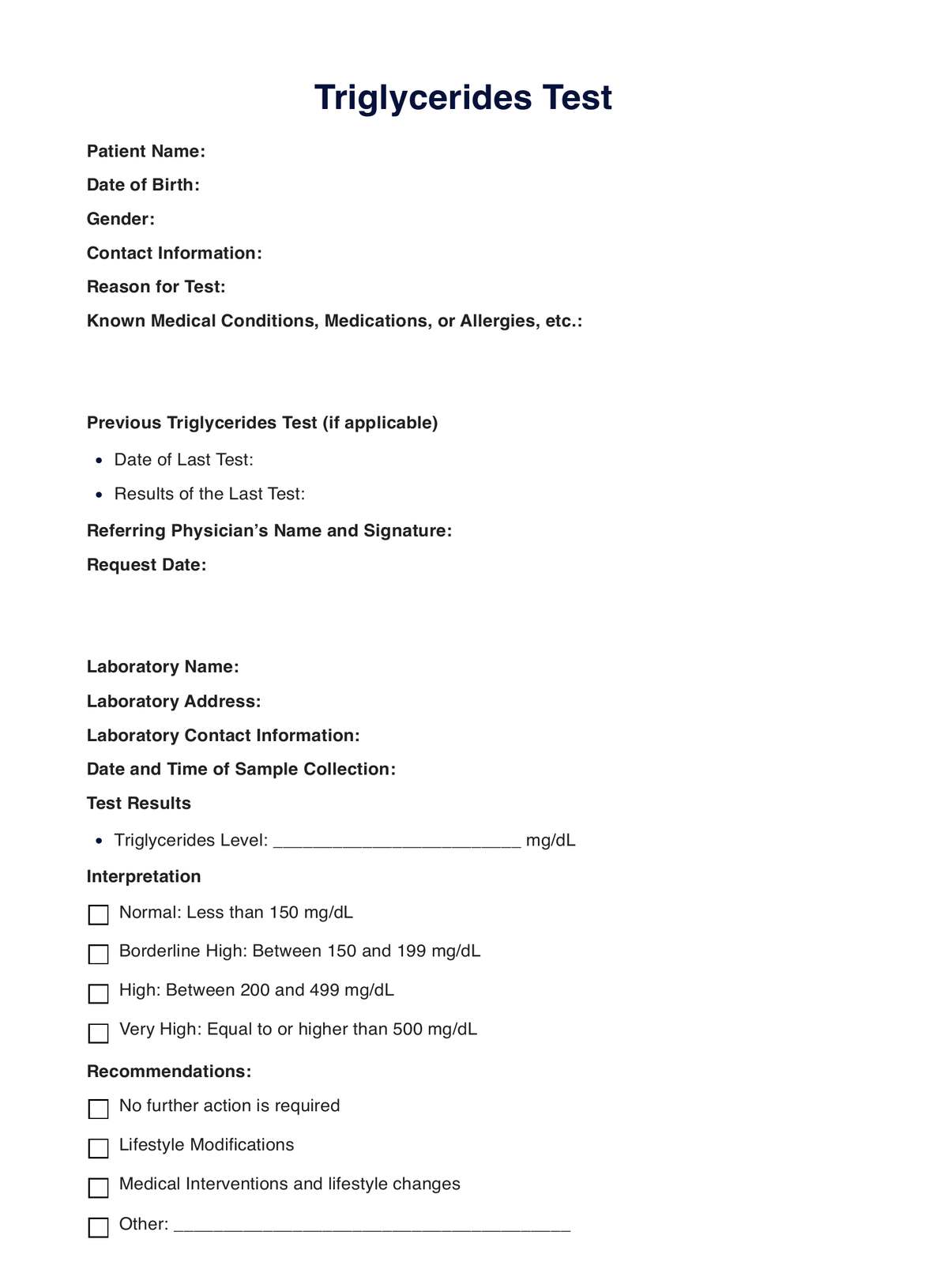General physicians, their assistants, and nurses, especially ones who are caring for patients who have pre-diabetes, diabetes, heart disease/condition, or are at risk of developing any of these, are the ones who typically request a triglycerides test.

Triglycerides
To understand the function and test results of the triglyceride test better, click here to check out our guide packed with information and a free template.
Use Template
Triglycerides Template
Commonly asked questions
Triglyceride tests are used during routine checkups, risk assessments, and monitoring or managing a disease or condition wherein the triglycerides are impacted.
Typically, the turnaround time for a triglycerides test is one business day. However, do take note that it may take longer, depending on the laboratory processing the sample.
EHR and practice management software
Get started for free
*No credit card required
Free
$0/usd
Unlimited clients
Telehealth
1GB of storage
Client portal text
Automated billing and online payments











